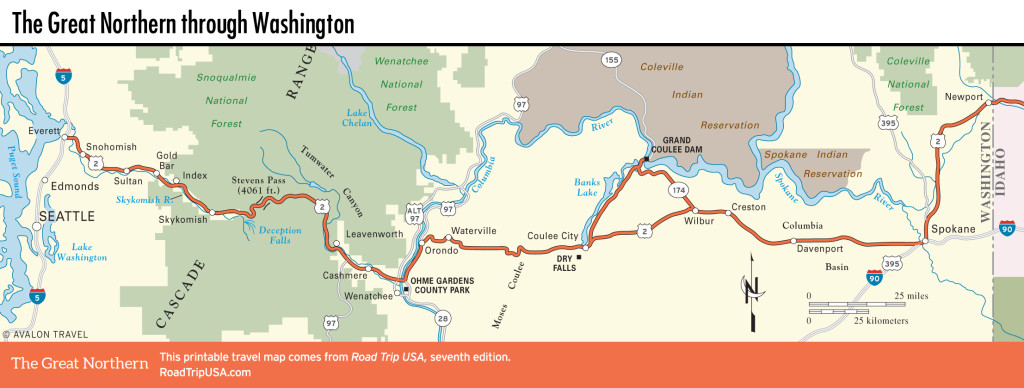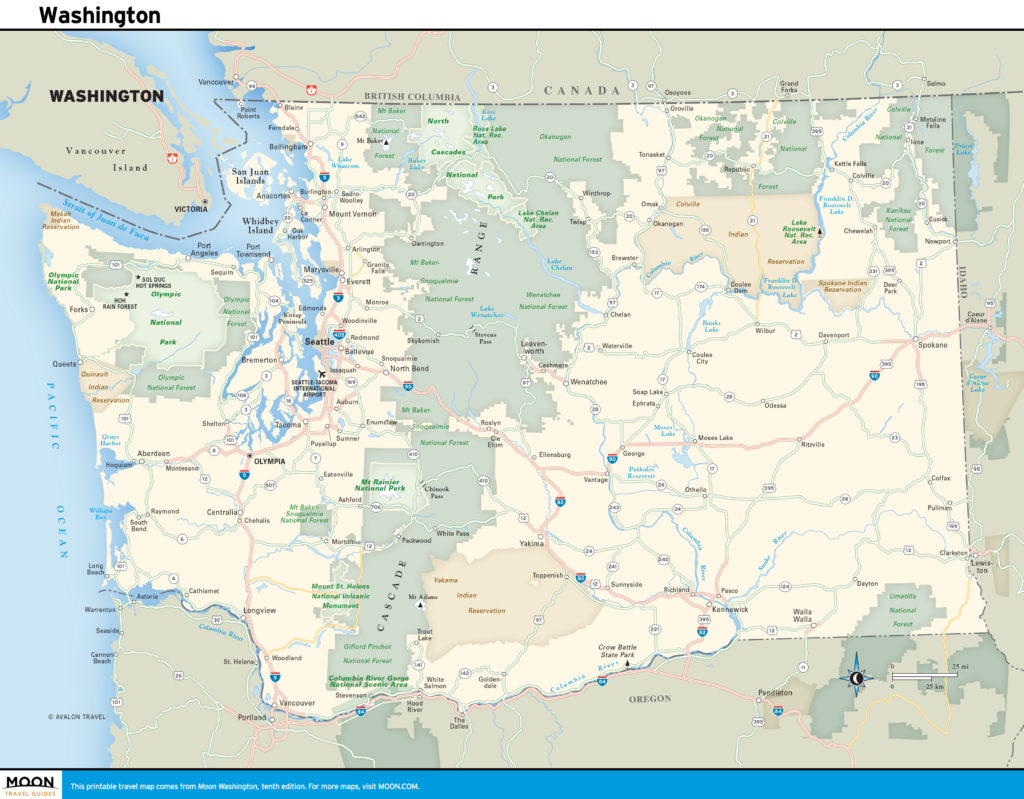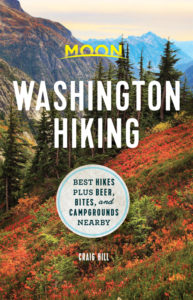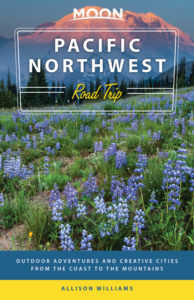Spokane
The only real city in eastern Washington, Spokane (pop. 219,190) feels even bigger than it is thanks to its location amid the prosperous agricultural hinterlands of the Columbia River Basin. First established as a fur-trading outpost around 1810, Spokane began to grow when railroads arrived in the 1870s and has boomed since the advent of irrigation in the 1940s. The second largest city in Washington, and the biggest between Seattle and Minneapolis, Spokane is economically dependent on warehousing and transportation, taking advantage of its busy railroads as well as its location at the junction of US-2, US-395, and I-90.
Though downtown Spokane boasts a number of grand buildings—one guidebook calls Riverside Street between Jefferson and Lincoln “the loveliest three blocks in the Pacific Northwest”—Spokane came of age when it hosted the 1974 World’s Fair, for which much of the riverfront was cleared and converted to the attractive 100-acre Riverfront Park. Designed by Frederick Law Olmsted a mere century earlier but never implemented, the park gives good views of tumbling Spokane Falls, which form a deep canyon at the center of downtown. Besides an opera house and a convention center, other remnants of the fair include a summer-only gondola sky ride (daily, $9.75) that drops down to the base of the falls, a 1909 Looff Carousel ($2) complete with hand-carved wooden horses, an IMAX theater, and a landmark sandstone clock tower that’s the sole reminder of the Great Northern rail yards that lined the riverfront for most of the previous century.
Riverfront Park is right at the heart of downtown, and a quick walking tour can take in dozens of well-preserved, creatively reused architectural treats, like the Spokane City Hall (808 W. Spokane Falls Blvd.), which faces the southwest corner of Riverfront Park—the only government I know of that’s housed in a converted Montgomery Ward department store, a cast concrete gem dating from 1929. Another worthwhile stop is Auntie’s Bookstore (402 W. Main Ave., 509/838-0206), a full-service independent bookstore with a popular café next door.
Northeast of downtown, across the Spokane River via Division Street (US-2), the best-known dropout of Gonzaga University, Bing Crosby, is fondly remembered in a museum in the Bing Crosby House (508 E Sharp Ave.).
Spokane’s other center of visitor interest is Browne’s Addition, a turn-of-the-20th-century residential district a mile or so west of downtown with many stately homes. The highlight here is the wonderful MAC, the Northwest Museum of Arts and Culture (2316 W. 1st Ave., 509/456-3931, Tues.-Sun., $19.50), which houses extensive collections of artifacts tracing Native American and regional history and culture.
Where to Eat and Stay in Spokane
There’s no shortage of good places to eat in Spokane, from hearty and homespun to eclectic and expensive. Spokane’s best breakfast is served up in a unique setting: the former presidential carriage of the Northern Pacific Railroad is now Frank’s Diner (1516 W. 2nd Ave., 509/747-8798) near downtown. Spokane’s youthful, outdoorsy population also supports numerous bistro-style restaurants and brewpubs, like the Elk Public House (1931 W. Pacific Ave., 509/363-1973), west of downtown.
Motels line the main highways in and out of Spokane, especially along I-90. Spokane also has a great place to stay at the heart of downtown: The fabulous Historic Davenport Hotel (10 S. Post St., 800/899-1482, $170 and up) has luxurious rooms in the fully renovated circa-1914 original and in a brand-new tower.
Travel Maps of the Great Northern Through Washington

















